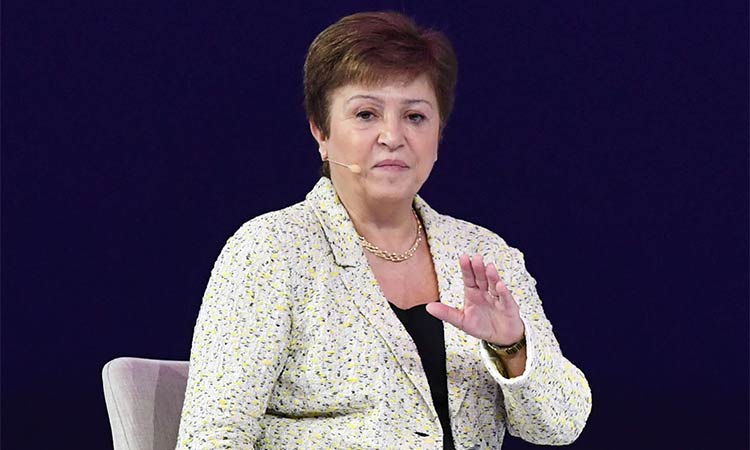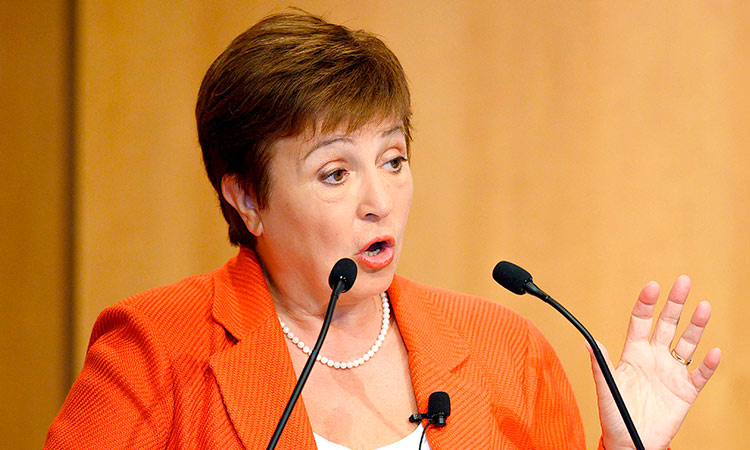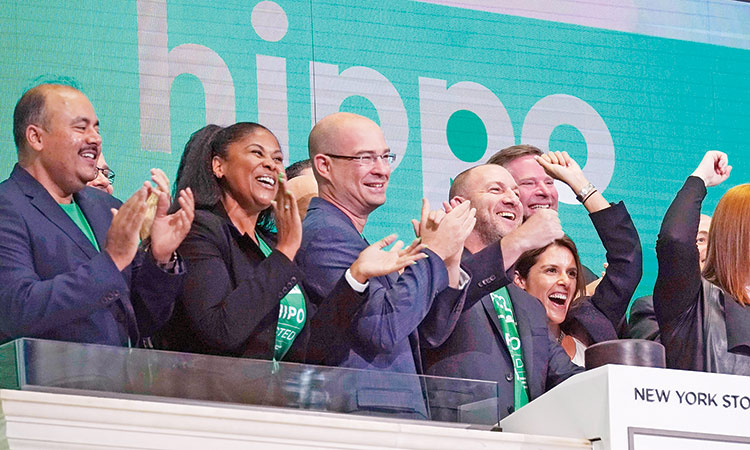IMF to keep 2021 global growth forecast at 6 per cent: Georgieva

Kristalina Georgieva
Georgieva, speaking at an online event sponsored by the Peterson Institute for International Economics, said that economic recovery will be held back unless the pace of COVID-19 vaccination picks up, adding that a goal of ending the pandemic by the end of 2022 will not be reached at the current pace. The IMF projected in April that 2021 global growth would hit 6%, a rate unseen since the 1970s, as vaccine availability improves and economies reopen with the help of unprecedented fiscal stimulus, particularly in the United States.
But Georgieva said the relative lack of vaccine access in developing countries and the rapid spread of the COVID-19 Delta variant was threatening to slow the recovery’s momentum.
The IMF is scheduled to release its next World Economic Outlook forecast update on July 27, but Georgieva said the IMF’s projected global growth rate for this year would remain at 6%.
“It is 6% in July, but between April and July, the composition of this 6% has changed,” Georgieva said in the PIIE session with former European Union trade commissioner Cecilia Malmstrom.
“Some countries are now projected to grow faster, some countries are now projected to grow slower. What is the difference? It is primarily the speed and effectiveness of vaccinations and availability of fiscal space to act,” Georgieva added.
She said an IMF-World Bank goal for countries to provide $50 billion to step up COVID vaccination rates will likely require more than the 11 billion doses initially envisioned, because booster shots may now be necessary, and to cover vaccine losses in some developing countries that lack sufficient cold storage facilities.
Separately, the International Monetary Fund and World Bank 2021 annual meetings will be held in a hybrid format from Oct. 11-17 with officials from member countries invited to attend in person, but public events and press conferences held virtually, the IMF said on Tuesday.
IMF and World Bank Group buildings will be open only to essential staff, certain government ministers and governors and delegates attending the meetings, the Fund said.
The IMF said it and the World Bank Group “will continue to monitor the worldwide epidemiological situation and if needed, amend this plan in accordance with relevant guidance” from the World Health Organization and US Centers for Disease Control and Prevention.
Stocks move higher: stocks moved higher for a second day on Wednesday, continuing to recover follwing a sharp drop at the beginning of the week. Investors have turned their attention to company earnings, which have started to roll in steadily as earnings season ramps up.
The S&P 500 index was up 0.7% as of 12:10pm. The Dow Jones Industrial Average rose 0.8% and the Nasdaq composite was up 0.6%. Despite Monday’s steep drop, all three indexes are now positive for the week.
What’s pushing stocks higher the last two days has been better-than-expected results from big corporations. Summer is typically a slow time for Wall Street, with investors and traders taking vacations and holding steady until later this year. The dominant thing that will drive the market, with the exception of big economic reports, will be how well companies do versus expectations.
Oil prices rose more than 4% on Wednesday, extending gains from the previous session as improved risk appetite provided support despite data showing an unexpected rise in US oil inventories.
Brent crude futures rose $2.93, or 4.2%, to $72.28 a barrel by 12:06pm. US West Texas Intermediate (WTI) crude futures rose $3.16, or 4.7%, to $70.36 a barrel, a 4.7 percent gain.
Futures are rebounding after dropping around 7% on Monday, following a deal by the Organization of Petroleum Exporting Countries and allies, together known as Opec+, to boost supply by 400,000 barrels per day from August through December.
The sell-off was exacerbated by fears that a rise in cases of the Delta variant of the coronavirus in major markets like the United States, Britain and Japan would affect demand.
The price gains on Wednesday also come despite a rise in US crude stockpiles for the first time since May. Crude inventories rose unexpectedly by 2.1 million barrels last week to 439.7 million barrels, US Energy Information Administration data showed. Analysts had expected a 4.5 million-barrel drop.
Gold dropped for a second straight session to its lowest in more than a week on Wednesday, as a firmer dollar and rebound in US Treasury yields dented the metal’s allure.
Spot gold fell 0.3% to $1,804.54 per ounce by 10:19am, having hit a low since July 12 at $1,793.59. US gold futures dropped 0.4% to $1,804.40 per ounce.
The US dollar traded close to its highest since the start of the year, making gold more expensive for holders in other currencies.
Surging Delta variant COVID-19 infections which raised fears over a stalling global economic recovery, had weighed on risk sentiment and sparked an equities sell-off on Monday, but stocks and bond yields have since recovered, further dimming safe-haven bullion’s appeal.







